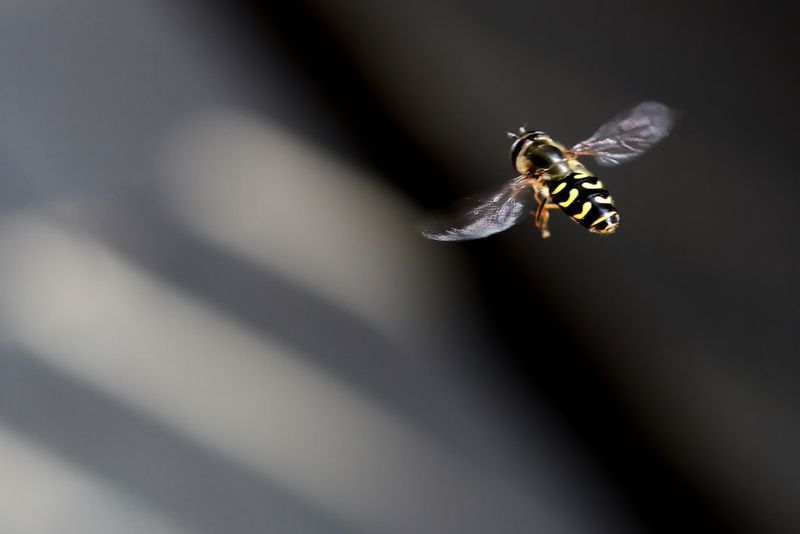### Introduction
In a concerning development, an invasive yellow-legged hornet, Vespa velutina, has been spotted alive in the wild in the United States for the first time near Savannah, Georgia. This species, native to Southeast Asia, is a close cousin of the Asian giant hornet, also known as the “murder hornet,” due to its destructive impact on honeybee colonies. This sighting has raised alarm among agriculture officials, as the yellow-legged hornet poses a significant threat to honey producers, the farming industry, and overall food production. Efforts are now underway to track, trap, and eradicate this invasive pest.
### The Threat to Honeybees and Pollinators
The yellow-legged hornet is a prolific predator of honeybees and other pollinators. Its presence in the United States raises concerns about the decline of honeybee populations and the potential implications for crop pollination. Honeybees play a vital role in the production of numerous crops, including almonds, cherries, oranges, and various other fruits. According to the Food and Drug Administration, bee pollination adds around $15 billion to the value of crops. Roughly one-third of the food consumed by Americans comes from crops pollinated by honeybees, highlighting the significance of these insects for food security.
### The Importance of Eradication Efforts
Considering the critical role of honeybees and the farming industry, it is imperative to track and eliminate invasive pests like the yellow-legged hornet. The Georgia Department of Agriculture is collaborating with the U.S. Department of Agriculture and the University of Georgia to develop strategies to trap, track, and eradicate this new threat to pollinators. Early detection and quick action are essential to prevent the establishment and spread of invasive species. Efforts to educate the public and involve them in reporting possible hornet sightings are also crucial for effective management.
### The Distinction from Native Wasps
It is important to note that the yellow-legged hornet and the Asian giant hornet are distinct from native wasps in North America. While common U.S. insects like yellowjackets and bald-faced hornets are sometimes mistaken as hornets, they do not engage in the same destructive behavior towards bee colonies. These invasive hornets, in contrast, are exceptional social predators that specifically target honeybees. Their larger size, stronger exoskeleton, and ability to summon more invaders using pheromones make them formidable adversaries for bees, which have not evolved alongside these predators.
### Philosophical Implications
The introduction of invasive species into new ecosystems raises philosophical questions regarding the ethical responsibility of humans towards the environment. As globalization and human activities continue to facilitate the spread of non-native species, it becomes essential to reflect on the consequences and impacts of our actions. Invasive species can disrupt ecosystems, threaten biodiversity, and harm essential services provided by nature, such as pollination. As caretakers of the planet, it is our duty to mitigate these risks through responsible management, monitoring, and prevention measures.
### Editorial and Advice
The presence of the yellow-legged hornet in the U.S. serves as a wake-up call to strengthen our efforts in preventing and managing invasive species. Governments, research institutions, and the public must work together to develop robust surveillance systems and effective response strategies. Emphasizing public awareness and engagement is key in reporting potential sightings and facilitating early detection. Moreover, investment in research to understand the behavior and ecology of invasive species, and the development of targeted eradication methods, is crucial for effective management.
In addition, this situation underscores the importance of protecting pollinators like honeybees. Sustainable agricultural practices, preservation of natural habitats, and the reduction of pesticide use are vital for ensuring the resilience of pollinator populations. Creating pollinator-friendly habitats, such as planting native wildflowers and avoiding the use of harmful chemicals, can support bee populations and enhance their ability to withstand threats from invasive species.
In conclusion, the sighting of the yellow-legged hornet in the U.S. highlights the urgent need for action in managing invasive species and protecting pollinators. The potential harm to honeybees, agricultural industries, and food security requires proactive and collaborative efforts. By prioritizing monitoring, research, education, and responsible environmental practices, we can mitigate the risks posed by invasive species and safeguard our delicate ecosystems.

<< photo by Anne Nygård >>
The image is for illustrative purposes only and does not depict the actual situation.
You might want to read !
- The Threat of Asian Hornets: A New Predator Emerges in America
- The Lionesses’ Gamble: England’s Winning Strategy against Sam Kerr
- England’s ‘fairytale’ journey to Women’s World Cup final gets royal seal of approval
- Titans WR Treylon Burks Sidelined with LCL Sprain: Impact on Team Offense and Playoff Push
- “The Extravagance of Brad Pitt and Jennifer Aniston’s Lavish Lifestyle: A Wall of Caviar and Beyond”
- The Potential Clash: Philadelphia Union vs Inter Miami in the Semifinals of Leagues Cup
- “From Fashion Mogul to Motherhood: Exploring Ashley Olsen’s Newest Chapter”
- The Power of Female Friendship: Karlie Kloss Supports Taylor Swift’s Epic Grand Finale
- “Wildfires Crisis in Yellowknife, Canada: Exploring the Impact and Urgent Response Needed”
- “Tropical Storm Hilary Strengthens: Will It Become a Hurricane?”
- Tropical Storm Hilary expected to deluge Southern California with heavy rainfall – Preparing for potential flooding and wind damage




